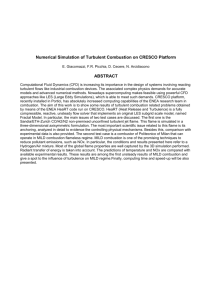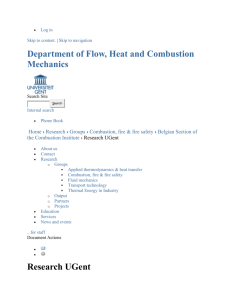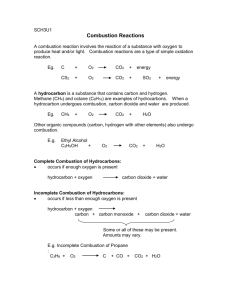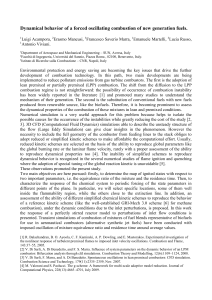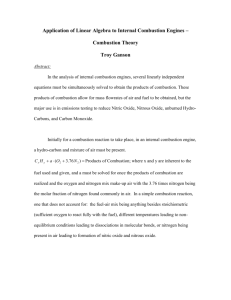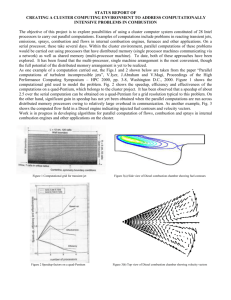Title: Optimization of High Performance Combustors for Military Gas
advertisement
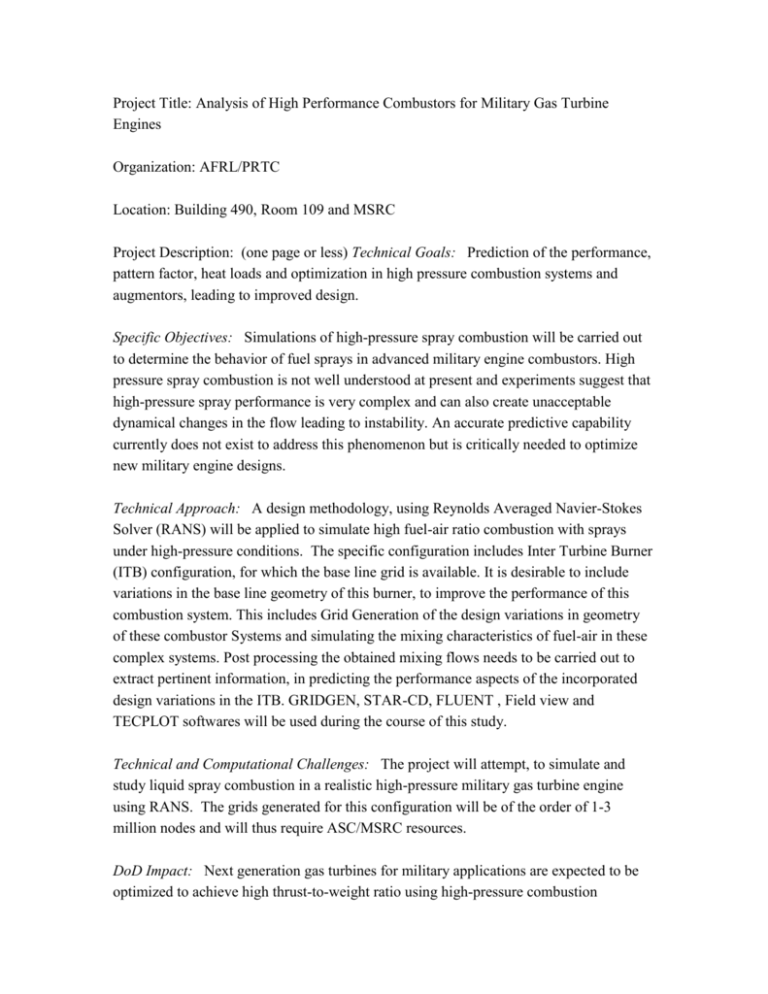
Project Title: Analysis of High Performance Combustors for Military Gas Turbine Engines Organization: AFRL/PRTC Location: Building 490, Room 109 and MSRC Project Description: (one page or less) Technical Goals: Prediction of the performance, pattern factor, heat loads and optimization in high pressure combustion systems and augmentors, leading to improved design. Specific Objectives: Simulations of high-pressure spray combustion will be carried out to determine the behavior of fuel sprays in advanced military engine combustors. High pressure spray combustion is not well understood at present and experiments suggest that high-pressure spray performance is very complex and can also create unacceptable dynamical changes in the flow leading to instability. An accurate predictive capability currently does not exist to address this phenomenon but is critically needed to optimize new military engine designs. Technical Approach: A design methodology, using Reynolds Averaged Navier-Stokes Solver (RANS) will be applied to simulate high fuel-air ratio combustion with sprays under high-pressure conditions. The specific configuration includes Inter Turbine Burner (ITB) configuration, for which the base line grid is available. It is desirable to include variations in the base line geometry of this burner, to improve the performance of this combustion system. This includes Grid Generation of the design variations in geometry of these combustor Systems and simulating the mixing characteristics of fuel-air in these complex systems. Post processing the obtained mixing flows needs to be carried out to extract pertinent information, in predicting the performance aspects of the incorporated design variations in the ITB. GRIDGEN, STAR-CD, FLUENT , Field view and TECPLOT softwares will be used during the course of this study. Technical and Computational Challenges: The project will attempt, to simulate and study liquid spray combustion in a realistic high-pressure military gas turbine engine using RANS. The grids generated for this configuration will be of the order of 1-3 million nodes and will thus require ASC/MSRC resources. DoD Impact: Next generation gas turbines for military applications are expected to be optimized to achieve high thrust-to-weight ratio using high-pressure combustion operation. High fuel-air ratio combustion is expected to occur during substantial part of the flight envelope. Many new phenomena observed at low pressure combustion including unacceptable flow instabilities needs to be investigated for high pressure JP-8 combustor flows.. Background or Skills Required: (half page or less) TECPLOT and /or any other plotting/flow visualization software, generating flow grids through GRIDGEN, either STAR-CD or FLUENT or CFD++ software experience ( preferred) Number of Academy Cadets/Midshipmen: 2 Number of Academy Faculty: 1 Requested Duration: (in weeks) 10 weeks Security Clearance Required: Not applicable ( 6.1 -6.2 in nature) Sponsor Name: Balu Sekar Sponsor Phone Number: 255 2668 Sponsor E-Mail Address: balu.sekar@wpafb.af.mil



